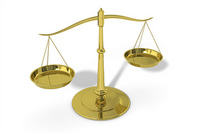New reports compare DCPS and charters

Photo by Chris Potter on Flickr.
DC’s education agencies have joined forces to produce a set of reports that make it easier to compare DCPS and charter schools. The new data include figures on special education students, suspensions, expulsions, and mobility during the last school year.
The DC School Equity Reports, funded by the NewSchools Venture Fund, could help answer questions that until now have been the subject of speculation. Those questions include whether DCPS has higher rates of special ed students than many charter schools and whether some highly effective charter schools are pushing out troublesome students.
But broad comparisons between sectors are difficult even now, because the data is in the form of individual school-by-school profiles. Still, the reports make it possible for the first time to compare a DCPS school and a charter school on a range of common measures.
At 767 pages long, the full compendium of reports is unwieldy. Probably the best place to compare individual schools is at LearnDC.org, a site operated by the Office of the State Superintendent of Education that provides information about both DCPS and charter schools. Each school profile there should contain a link to its equity report.
Links to DCPS schools’ equity reports appear on each school’s profile page on the DCPS website. The Public Charter School Board (PCSB) doesn’t link to individual charter school reports on its individual school profile pages, but the whole report is available on its website, and a PCSB spokesperson said that the board is working on allowing users to click on a school’s name in the table of contents and get directly to the school’s report. The PCSB has also made the underlying raw data available on its website, for those who would like to create graphs and charts.
Media commentary so far has focused on the high rates of student mobility documented in the equity reports, particularly what appears to be a flow of students from charters to DCPS. Some have charged that high-performing charter schools either expel or otherwise push out difficult students, who then become DCPS’s problem.
According to the Washington Post, 80% of DCPS schools see a net gain in enrollment over the course of the school year, and 90% of charters have a net loss. The Post focused on Anacostia High School, which saw huge swings in entries and exits and ended the school year with 16% more students.
In its report, WAMU quoted Anacostia’s principal as saying that most of those transferring in mid-year came from charters. Scott Pearson, executive director of the PCSB, told both outlets that he hopes airing the data will lead to fewer transfers out of charters, but that the current funding formula provides perverse incentives.
If a student leaves a charter school after October 5, the school doesn’t lose any money. But if a new student enters, the charter doesn’t get any additional funds. Some charters prohibit students from transferring into the school mid-year, but DCPS doesn’t have that option.
Some have also criticized charters for high suspension rates. But comparisons show that even the charters with the highest rates may be surpassed by some DCPS schools.
DC Prep Edgewood Middle (Edgewood) had the highest rate of suspensions for a charter, with 48% of students getting at least one one-day suspension. But Kramer, a DCPS middle school in Ward 8, gave 51% of its students a suspension of one day or more, and 9% were suspended for 11 days or more. “City-wide” averages for suspensions at schools with comparable grades are 26% and 1% for those two categories.
Another common criticism of charter schools is that they don’t have as high a population of special education students as DCPS. As with suspensions, it’s hard to draw sector-wide conclusions without more sophisticated statistical analysis. But it’s clear that some charters have less than the overall DCPS proportion of special ed students, 17%. (That figure includes an unspecified number of students attending private schools at public expense.)
Edgewood, for example had 15% special ed, while two DCPS middle schools, Eliot-Hine and Hart, had 31% and 25% respectively. On the other hand, Deal MS in Ward 3 has only 10% special ed students.
And the equity reports show that special ed students at Edgewood performed significantly better on DC standardized math tests than those at Deal, as measured by both proficiency and growth. At Deal, special ed students had a 48% proficiency rate and were in the 41st percentile for average two-year growth. At Edgewood, those figures were 70% proficient and 65th percentile for growth.
One commendable feature of the equity reports is that they put proficiency rates and growth measures side by side, whereas DCPS school profiles place more emphasis on proficiency rates. Not only are proficiency rates subject to manipulation, they also tend to reflect the strengths students bring to a school rather than the knowledge they acquire as a result of the school’s efforts.
The bottom line is that despite the new data, comparisons will still be complicated, and the picture will not always be clear. But at least parents who are trying to decide on the best school for their child now have a method for comparing specific schools across the charter and DCPS sectors, bringing us closer to something resembling a unified school system.
